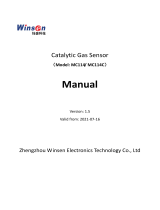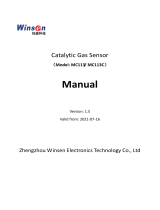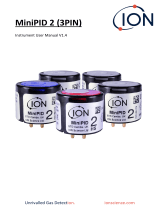Sensitivity of the sensors will be reduced when spattered or dipped in water.
1.5 Freezing
Do avoid icing on sensor’s surface, otherwise sensing material will be broken and lost sensitivity.
1.6 Applied voltage
Applied voltage on sensor should not be higher than 120mW, it will cause irreversible heater damaged, also
hurt from static, so anti-static precautions should be taken when touching sensors.
2. Following conditions must be avoided
2.1 Water Condensation
Indoor conditions, slight water condensation will influence sensors’ performance lightly. However, if water
condensation on sensors surface and keep a certain period, sensors’ sensitive will be decreased.
2.2 Used in high gas concentration
No matter the sensor is electrified or not, if it is placed in high gas concentration for long time, sensors
characteristic will be affected. If lighter gas sprays the sensor, it will cause extremely damage.
2.3 Long time exposed to extreme environment
No matter the sensors electrified or not, if exposed to adverse environment for long time, such as high
humidity, high temperature, or high pollution etc., it will influence the sensors’ performance badly.
2.4 Vibration
Continual vibration will result in sensors down-lead response then break. In transportation or assembling line,
pneumatic screwdriver/ultrasonic welding machine can lead this vibration.
2.5 Concussion
If sensors meet strong concussion, it may lead its lead wire disconnected.
2.6 Soldering
2.6.1Recommended conditions for reflow soldering
neutral atmosphere
soldering temperature 250±10℃
avoid flux steam
2.6.2Recommended conditions for manually soldering
rosin flux with least chlorine
soldering temperature ≤350℃
lasting time ≤5s.
If disobey the above using terms, sensors sensitivity will be reduced.
Package
The surface of the MEMS sensor is affixed with a special protective film to prevent the influence of dust, water,
atmosphere and high temperature. After the welding is completed, the protective film can be removed.














